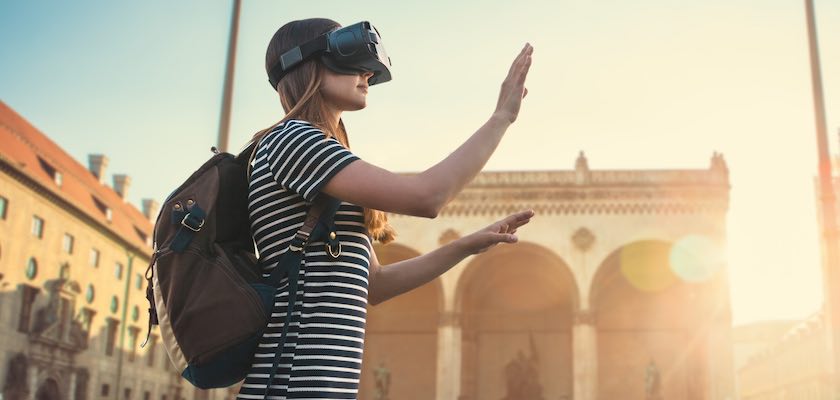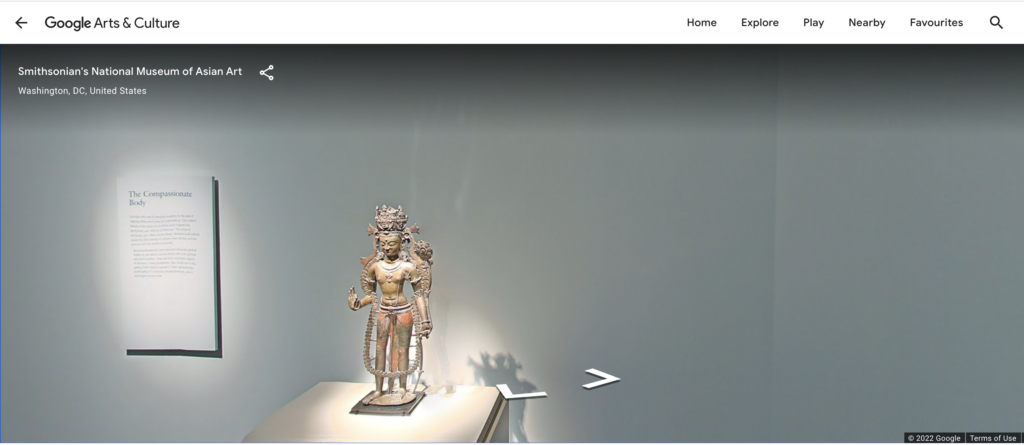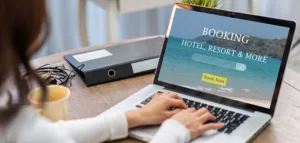
Applications Of Virtual Reality In Tourism Marketing Strategy
Virtual reality is a handy marketing tool in the tourism industry. As a field that opens up a vast space for creativity, tourism embraces VR-based marketing projects.
Marketing gets the most out of tech opportunities to boost engagement and build relationships. Specifically, VR marketing strengthens companies’ hands to approach their target audience with an exciting and impactful medium.
The potential customers of the tourism industry are looking for an appealing experience. So, when brands can share the experience they offer in their communication, they increase their chances of being chosen by the audience.
Why is VR Being Used in Marketing?
In today’s world, people are used to communicating virtually, and VR is moving communication one step further.
Brands have already integrated VR into their digital marketing strategies. Indeed, it is a great idea considering that VR offers a realistic experience. It’s worth noting that it’s what consumers expect from the brands to engage and be a customer, especially in tourism.
Using virtual reality in tourism marketing strategy enables companies to
- explain themselves better,
- convey their messages more clearly,
- build strong relationships and
- increase the sales and brand awareness.
Benefits of virtual reality in marketing come from the digital, so-to-say, more accessible experience representing the physical one. Therefore, VR technology is far beyond being limited to the gaming industry, and it is expanding its presence and impact in all industries like the wind.
How Could a Travel and Tourism Company Utilize Virtual Reality to Enhance Their Business?
A travel and tourism company can promote and showcase their products and services using 360-degree videos. The immersive experience helps the audience connect with the brand.
Even though sales-focused communication still works, people tend to engage more with experience-focused approaches. As a result, travel and tourism companies need to go creative as much as possible to reach out to more people and get some ROI for their marketing efforts.
Here are some ideas to implement VR into your tourism marketing strategy. We hope to give some inspiration and help you enhance your business with VR with this article.
- Virtual reality hotel tour
- Virtual wine tasting
- Virtual tour of travel destination
- A guided virtual city tour
- A virtual visit to museums and galleries
- Virtual adventure and such
Virtual Reality Hotel Tour
One of the most common use cases of VR in tourism is creating virtual hotel tours. You can invite your potential guests to a virtual experience to present your rooms, amenities, and location.
You can easily use 360-degree photos or videos and add them to your website. So, your visitors will get an immersive experience and feel how it’s to be in your hotel. Improve your visuals with storytelling and make them watch the video like they are the main character in it.
Here is a great example of a virtual reality hotel tour. The video displays flawlessly even on a regular screen as it’s high-quality.
Virtual Wine Tasting
You can even offer wine tasting from the comfort of your audience’s house with a more impressive experience. You can simply create VR videos for your vineyard and restaurant with a guide giving information about the wines they are testing.
So people will see the grapes in the vineyard, take a walk in your beautiful venue, and learn more about your wines. In this way, you will offer them a digital experience that is much more enhanced than only tasting the wines.
These wine tastings are great for wineries themselves but also to promote wine regions, retailers, and wine clubs. It’s quite a creative use of virtual reality in tourism.
Virtual Tour of Travel Destination
Travelers are starting their vlogs one by one because people like watching travel videos! You can also take advantage of this rising trend and create virtual tours of travel destinations. You can be a tour company or a restaurant on the beach. No matter what your business does in the tourism industry, you can benefit from VR in marketing by creating virtual tours.
Make sure to include your business in the video in an organic way instead of turning it into an advertisement. Well, a 360-degree video ad is also a good idea, but if you’re taking a tour video for a travel destination, we recommend you join the game accordingly.
A Guided Virtual City Tour
A guided virtual city tour is informative, enjoyable, and engaging. Rather than just taking the videos of the streets in your city, try creating a more valuable experience with the support of a local guide.
You can showcase the city attractions and landmarks in the video, and your guide can tell about the historical and cultural background, just like walking around the city with a guide.
Take this video as an example. The viewer gets the sense of wandering in London and learns catchy info from the guide.
A Virtual Visit to Museums and Galleries
It has been quite popular since the beginning of the pandemic. When people were locked in their houses, they fed their hunger for art by visiting museums virtually. But apparently, it will stay longer.
Google already has a huge collection of virtual museums under Google Arts & Culture. For example, it’s possible to visit The British Museum in London, the Van Gogh Museum in Amsterdam, the Guggenheim in New York City, and many more.

If you’re operating a museum or an art gallery, you can get inspired by them to create your own virtual space.
Virtual Adventures and Such
Virtual reality can also share a glimpse of adventure. If you are selling adventure tours, you can create magnetic VR content that will attract your audience. Rock climbing, skiing, skydiving, bungee jumping, scuba diving, and more…
Videos of real adventurers or even animation videos can turn into your next amazing marketing material.
When people feel the adrenaline rising up in their body even just by watching the 360-degree videos, they will be excited to book their spot on your next tour.
Here is National Geographic’s underwater video to give you an idea.
Technology in tourism is opening more space for imagination and creativity. VR is definitely a great option to make use of to reach out to many more people. If you have questions about how to apply VR in your tourism brand’s marketing strategy you can seek assistance from the best travel & tourism marketing agencies in the USA.























